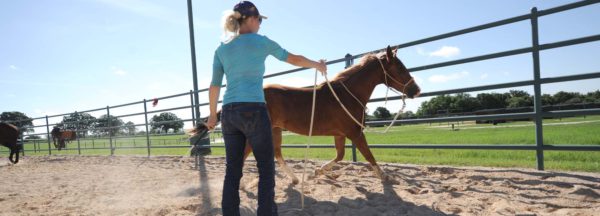Training Tip: Training a Paso Fino Horse

Question: What recommendation can you give me to work with a Paso Fino horse?
Answer: When we take horses in for training, we treat them all the same. All horses need the same basic foundation, which is covered in the Fundamentals Series and progresses through the Intermediate and Advanced Series. Once a horse is trained through the Method, then we begin focusing on training him for a specific discipline.
I’m often asked by people who own gaited horses if they should do all the cantering and suppling exercises in the Method. The answer is yes! You’ll find that cantering will actually make your horse gait better, and there is no horse that doesn’t improve his performance by being soft and supple. There’s very little you can do with a horse if you can’t control his five body parts—his head and neck, poll, shoulders, ribcage and hindquarters.
While all horses need the same foundation, not all horses can do all of the exercises in the Method to the same level. For example, a draft horse that’s bred to lean into a harness and pull heavy loads isn’t going to be able to get back on his hindquarters and do a rollback the way a Quarter Horse can. In that respect, I pay attention to the individual horse and only ask that he give me the best performance that he can. One horse’s C plus may be another horse’s A plus.
As a general rule, Paso Finos are hot-blooded horses. They’re sensitive and feely and think “forward, forward, forward.” You won’t have much trouble sensitizing your horse to pressure because he already wants to move his feet—you just have to tell him in which direction to move them. Teaching these horses to stand still and relax will be the hardest thing for you to do because hot-blooded horses want to do everything today and are usually very busy-minded and nervous. And they are very aware of new environments, so if you ride them in a different location, they often get very reactive and spooky until you can get them to use the thinking side of their brains.
While all horses require a consistent training program to teach them lessons or to maintain the respect and control you’ve already earned, hot-blooded horses need to be worked with almost daily. Because they have so much energy, they need to have an outlet for it and they need to be challenged and interested in their lessons.
Have a horsemanship question or looking for more training tips? Check out the No Worries Club.
